  |
Academia Sinica Tagged Corpus of Early Mandarin Chinese (Academia Sinica)
The Academia Sinica Tagged Corpus of Early Mandarin Chinese is designed for historical linguistic research. The corpus contains texts in Early Mandarin Chinese (from Tang to Qing) that are selected because of their usefulness in grammatical and lexic... |
   |
Amphibians (National Museum of Natural Science)
Amphibians are the only vertebrates with a two-staged lifestyle. They have a special relationship with other animals in between land and water, and play an important part in the ecosystem. They are mostly small in size and nocturnal. Of the known nat... |
  |
Archaeological collections from central Taiwan (National Museum of Natural History)
Scholars of prehistoric Taiwan have devided archaeological culture of the west coast into north, central and south. Of these divisions, archaeological collections from central Taiwan include the prehistoric Dapenkeng, Niumatou, Yingpu, Damalin, Fantz... |
   |
Archaeology (National Taiwan University)
This archaeological collection was founded during the period of the Taihoku Imperial University Ethnoarchaeology Seminar, and was developed and expanded with field research conducted by the National Taiwan University Department of Anthropology from 1... |
  |
Archives of the Office of the Chief Executive (Taiwan Historica)
The Office of the Taiwan Chief Executive was the special governmental organization set up by the National Government in the early years after World war II, and was mainly occupied with property expropriation and rebuilding affairs. The files of the O... |
   |
Archives of the Taiwan Sotokufu (Taiwan Historica)
The files of the Taiwan Sotokufu (Governor-General) were originally stored in a large storage room in the archives department of the residence of the Taiwan Sotokufu. These included 6,789 volumes of permanent official records, and 3,226 volumes of 15... |
  |
Archives of the Taiwan Sotokufu Monopoly Bureau (Taiwan Historica)
The Taiwan Sotokufu Monopoly Bureau was the general administrative organization of the monopoly system of the Japanese government in Taiwan. The Taiwan Historica has in its collection approximately 4 million pages in 12,815 volumes of files of the Ta... |
  |
Bamboo and Wood (National Museum of History)
The National Museum of History houses a collection of 1,084 pieces of bamboo and wood artifacts, such as scholars’ desk and decorative objects, figurines of deities, ceremonial and musical instruments, objects of daily uses and production tools, wh... |
   |
Birds (National Museum of Natural History)
This project aims to establish a database of local bird specimens, and become a stronghold of avian studies in Taiwan. Current specimens span 18 orders, 70 families and 369 species, with a total of approximately 5,000 specimens; the systematic collec... |
  |
Book Collections on Taiwan under Japanese Rule, 1895-1945 (Academia Sinica)
Japanese old books are collected by Institute of Taiwan, previously held by Imperial Taiwan Library, Southern Materials Center and partly purchased from the Japanese professor of Taiwan university after the war, included books, periodicals, newspaper... |
  |
Bronze Rubbings collected in the Institute of History and Philology (Academia Sinica)
Institute of History and Philology of Academica Sinica collect over ten thousand bronze inscriptions. They are including exquisite overall rubbings and a large number of bronze inscriptions, both of which were bought by the former deceased president ... |
  |
Bronze ware (National Museum of History)
The collection of bronze ware in the National Museum of History, which has long been valued by archaeologists, were unearthed in Xinzheng, Hui County and Yinxu. Bronze can be used to make weapons for its sharpness; it can also be used to make ritual ... |
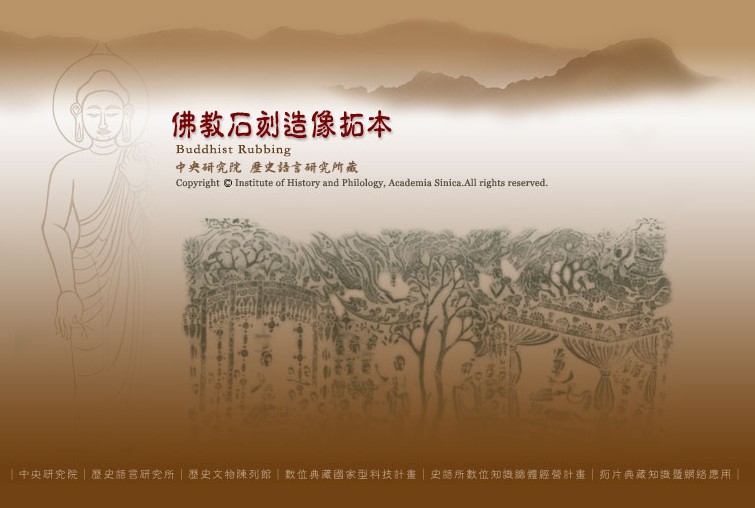   |
Buddhist Rubbing collected in the Institute of History and Philology (Academia Sinica)
There are about 4000 pieces ink-rubbings of the Buddhism statues and steles in the collection. A majority of these rubbings are from Chinese provinces, such as Henan, Hebei, Shanxi, Shandong, Shaanxi, Sichuan and Gansu. These rubbings are dated from ... |
  |
Calligraphy (National Museum of History)
With an aim to promoting and preserving Chinese culture, the National Museum of History has collected many exquisite calligraphy works, many of which are masterpieces of certain time periods. A large part of the collected works date from the early Re... |
  |
Calligraphy (National Palace Museum)
The National Palace Museum has a vast collection of calligraphy works, dating from the Jin and Tang dynasties to the ROC Era. The collection’s variety of styles, including the seal script (zhuanshu), the clerical script (lishu), the standard scrip... |
  |
Ceramics (National Palace Museum)
The antiquities held in the collections of the National Palace Museum span a period of at least 7,000 thousand years, and consist of a large variety of genres, including bronze, jade, porcelain, lacquerware, etc. Its collections are fine in quality ... |
  |
Chinese paintings (National Museum of History)
The National Museum of History houses approximately 3,182 Chinese paintings, most of which are works dating from the early Republic of China period onwards. Works of the Qing dynasty, ranked second in number, and a small number of works of the Tang, ... |
   |
Common Insects (National Taiwan University)
The genre “Common Insects” in the Insect Museum of National Taiwan University includes specimens for research and specimens for education. Different from type specimens, these specimens are insects the general public is usually familiar with, cho... |
  |
Curios (National Palace Museum)
The antiquities held in the collections of the National Palace Museum span a period of at least 7,000 thousand years, and consist of a large variety of genres, including bronze, jade, porcelain, lacquerware, etc. Its collections are fine in quality ... |
  |
Currency (National Museum of History)
The National Museum of History can claim to be the earliest museum known to be the “wealthiest”, considering the amount of money in its collection. The museum possesses 309 jute bags of the Qing and early Republic of China coins given by the Navy... |
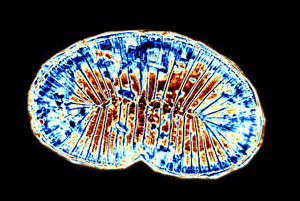   |
Diatoms (National Museum of Natural Science)
Digitized specimens and the introduction of diatom knowledge are both included here. Two main focuses are provided in the introduction: (1) the summary of diatom habitats and of frustule forms; (2) frustule types. Our specimens can be divided into tw... |
  |
Digital archives of fish fauna from Taiwan (Academia Sinica)
The fishes of Taiwan, over 10% of the world’s fish, comprise 2,902 species in 292 families so far and their taxonomic and distributional data have been integrated into a database that can be accessed interactively through internet at http://fishdb.... |
   |
Digital Archives Project For The Liao-Chin-Yuan Rubbings (Academia Sinica)
Among the collections of the Fu-Ssu-Nien Library of the Institute of History and Philology, Academia Sinica, there are approximately 2200 pieces of rubbings of the Liao, Chin and Yuan dynasties. The majority of the collections are about 1500 pieces o... |
   |
Diplomatic and Economic Archives (Academia Sinica)
The Institute of Modern History, Academia Sinica, has kept a collection of files on foreign and economic offices and data donated by individuals. The files on foreign offices include documents from the Office in Charge of Foreign Affairs (1861-1901),... |
  |
Documents (National Museum of History)
Document collection at the National Museum of History comprises oracle scripts, stone stele inscriptions, rubbings of painted bricks, paper documents, manuscripts, medals, pictorials, and other items of historical value. For the 2006 digital archives... |
  |
Echinodermata(National Museum of Natural Science)
Echinoderms are a group of large invertebrate animals that live completely in the sea. They are distributed from the intertidal zone to several thousand meters deep in the ocean. However, people come into contact with echinoderms most commonly on din... |
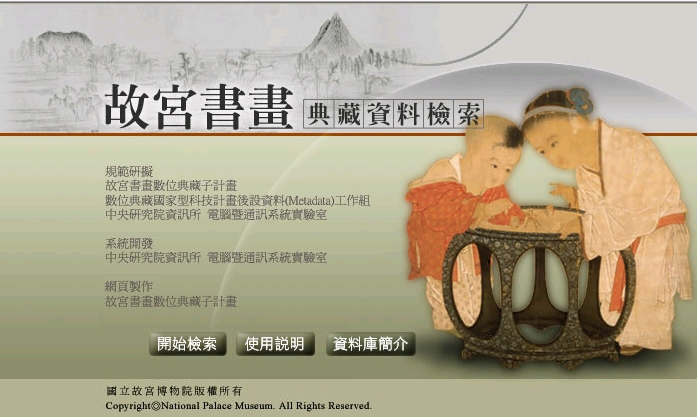  |
Embroidery and Tapestry (National Palace Museum)
The collection of embroidery and tapestry pieces in the National Palace Museum date from the Song dynasty to the ROC era, with a complete range of subjects, including landscape, flower and bird, figure, and so on. Though not particularly large in siz... |
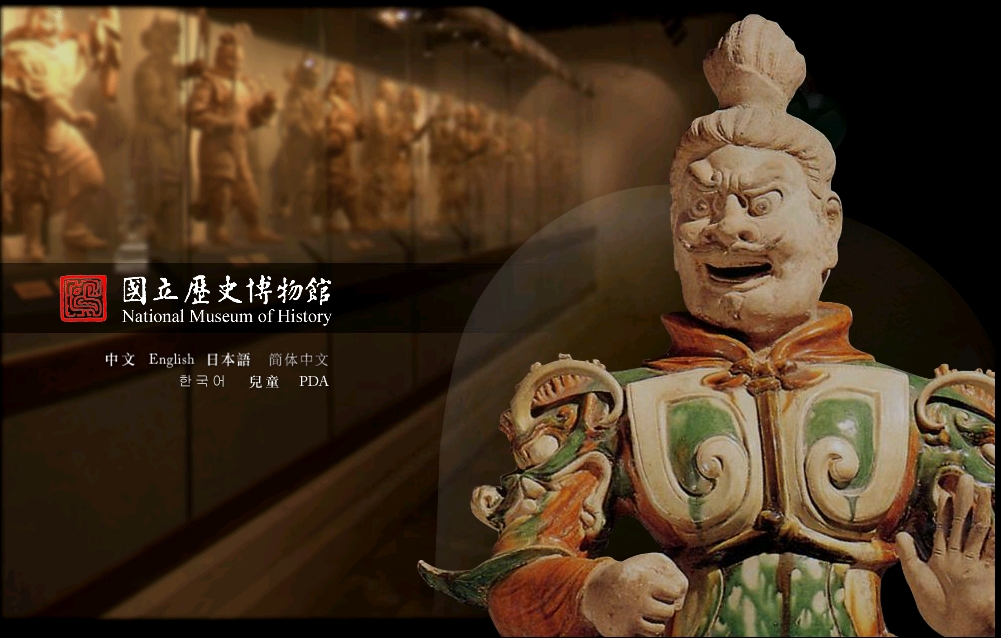  |
Enamel (National Museum of History)
Since 1956, enamel artifacts has been added to by the National Museum of History and reached a total of 182 items so far. Enamel pieces can be divided into several types such as utensils of daily use (bowls, cups, plates), decorative objects (snuff b... |
  |
Enameled Ware and Glassware (National Palace Museum)
The antiquities held in the collections of the National Palace Museum span a period of at least 7,000 thousand years, and consist of a large variety of genres, including bronze, jade, porcelain, lacquerware, etc. Its collections are fine in quality ... |
   |
Eriophyoidea (National Museum of Natural Science)
Insects of the Eriophyoidea superfamily are mites smaller than the naked eye can see, around 0.1~0.3 mm in size and worm shaped. Currently the Museum of Natural Science has in its collection around 7,000 Eriophyoidea slide specimens, including more t... |
   |
Ethnological Artifacts (National Taiwan University)
These ethnological images are field-based photos from the Taihoku Imperial University Ethnoarchaeology Seminar period and the National Taiwan University Department of Anthropology period. The main content covers not only various ethnic groups and the... |
   |
Ethnological Photos (National Taiwan University)
These ethnological images are field-based photos from the Taihoku Imperial University Ethnoarchaeology Seminar period and the National Taiwan University Department of Anthropology period. The main content covers not only various ethnic groups and the... |
   |
Fishes (National Museum of Natural Science)
Starting from 2003, the Museum of Natural Science has systematically collected fish specimens. Current goals focus on Taiwan-specific freshwater fish. Collaboration with other academic organizations is also under way, improving the speed and variety ... |
   |
Formosan Language Archive (Academia Sinica)
This archive project aims to record and maintain these languages through collecting and/or editing existing texts in digital forms with corresponding audio files. The Formosan Language Archive includes both Chinese and English browsing display on the... |
   |
Fossils (National Taiwan University)
The Department of Geosciences of National Taiwan University was established during the Japanese Colonial Period. Most of its paleontological collection was inherited in the age of Taihoku Imperial University, and its database is quite large in size, ... |
  |
Fossils of Cengjiang Biota (National Museum of Natural Science)
The Chengjiang biota was first discovered in the yellow-green shales in Maotienshan in Chengjiang County, Yunnan Province. In recent years, however, abundant Chengjiang biota fossils were also found in the siltstone layer above the shales, their know... |
   |
Fungi (National Museum of Natural Science)
Fungi are the second largest biological group after insects. Not only is there a large number of fungi types, their distribution is very widespread on the planet, and can be found in the air, on land, below the ground, in water, and on or inside othe... |
   |
Fungus type specimens (National Museum of Natural Science)
There are over 15,000 fungus specimens in the collection of the Museum of Natural Science, making it the largest collection of fungus specimens in Taiwan. The Museum houses 70 type specimens of fungi, and has also included data of type specimens in o... |
 |
Gallery of Insects (National Taiwan University)
The National Taiwan University Insect Museum Digital Archives Project, aside from collecting specimen images and profiles of insect life, has also gathered photos of these insects within the ecology of their natural environments. These records give a... |
   |
General Physics Data (National Taiwan University)
Having passed through a long history—from inheriting the hand-made or antiquated laboratory apparatuses in the age of Taihoku Imperial University and receiving an abundance of equipment during the period of U.S. aid after Taiwan’s retrocession, t... |
   |
General Physics Films (National Taiwan University)
Having passed through a long history—from inheriting the hand-made or antiquated laboratory apparatuses in the age of Taihoku Imperial University and receiving an abundance of equipment during the period of U.S. aid after Taiwan’s retrocession, t... |
   |
General Physics Manuscripts (National Taiwan University)
Having passed through a long history—from inheriting the hand-made or antiquated laboratory apparatuses in the age of Taihoku Imperial University and receiving an abundance of equipment during the period of U.S. aid after Taiwan’s retrocession, t... |
   |
General Physics Photographs (National Taiwan University)
Having passed through a long history—from inheriting the hand-made or antiquated laboratory apparatuses in the age of Taihoku Imperial University and receiving an abundance of equipment during the period of U.S. aid after Taiwan’s retrocession, t... |
   |
General Physics Texts (National Taiwan University)
Having passed through a long history—from inheriting the hand-made or antiquated laboratory apparatuses in the age of Taihoku Imperial University and receiving an abundance of equipment during the period of U.S. aid after Taiwan’s retrocession, t... |
    |
General Specimens of Plants (National Taiwan University)
Established in 1929, the Herbarium of the Institute of Ecology and Evolutionary Biology at the National Taiwan University (NTU) is now over seventy years old, with a collection of over 260,000 specimens. Among its collection, specimens of Taiwan’s ... |
  |
Glassware (National Museum of History)
The National Museum of History has collected glassware since 1996 and housed 213 pieces currently. The collection comprises utensils of daily use, burial objects and decorative pieces; their styles imitate those of jade, porcelain (or bronze ware), a... |
  |
Grand Secretariat Archives (Academia Sinica)
There are approximately 310,000 items in the Grand Secretariat Archives at the Institute of History and Philology. These include imperial decrees, edicts, memorials, tribute documents, examination questions, examination papers, rosters of successful ... |
   |
Han Dynasty Stone Relief collected in the Institute of History and Philology (Academia Sinica)
The source of our materials is the over 1,500 pieces of ink rubbings of stones and scripts of the Han Dynasty collected in Fu Ssu-nien Library, institute of History and philology, Academia Sinica. They include copies from the stones and bricks of Han... |
  |
Han Wooden Slips collected in the Institute of History and Philology (Academia Sinica)
The digital collection is the Han wooden slips collected in the Institute of History and Philology, Academia Sinica. The majority of the collections (about more than 11,000 pieces) are the “Han Chü-yen Wooden Slips” excavated in the Edsen-gol Ri... |
  |
Historical Images (Academia Sinica)
The contents of this collection are mainly portraits, family photos, events photos, old postcards and maps. Topics include the famous scenic and historic site of Taiwan during the Japanese colonial period, construction work, official buildings, abori... |
  |
Historical Records (Academia Sinica)
The database includes civil contracts and commercial data collected by Institute of Taiwan History. Civil contracts embrace contracts of paddies/real estate business, loan/mortgage, and division of family property, license, and personal relationship ... |
   |
Historical Resources on Reputable Geologists (National Taiwan University)
This historical catalogue of essential scientific materials and interviews detail the development of the geosciences in Taiwan through the scientists and scholars that defined the movement. Included are both original manuscripts as well as digitized ... |
   |
Images of Native Plants in Taiwan (Academia Sinica)
The image database of native plants in Taiwan consists mainly of the wildlife photos of Taiwan vascular plants. Preserving valuable image files, the database documents the precious natural resources of Taiwan, and provides a great basis for expert ac... |
   |
Insects (National Museum of Natural Science)
The current goal of the insect department is the collection of insect and mite specimens of Taiwan, aiming to expand to those from the Asian Pacific region and the entire world. The orders Lepidoptera and Homoptera are the main focus, with specimens ... |
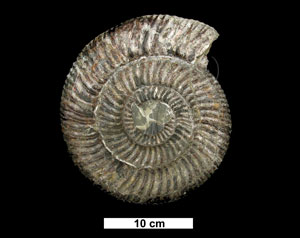   |
Invertebrates fossils (National Museum of Natural Science)
Invertebrate fossils are the most common fossils in Taiwan. The National Museum of Natural Science has budgeted for increasing its specimen collection every year since its founding. The bulk of the museum specimens are fossils from the Cenozoic layer... |
  |
Ivory and Bone (National Palace Museum)
The antiquities held in the collections of the National Palace Museum span a period of at least 7,000 thousand years, and consist of a large variety of genres, including bronze, jade, porcelain, lacquerware, etc. Its collections are fine in quality ... |
  |
Jade (National Museum of History)
There is a collection of 1,765 jade pieces of various kinds preserved at the National Museum of History. Ancient jade collection comprises prehistoric horseshoe-shaped jades from the Hongshan area, jade vessels of the Spring and Autumn Period unearth... |
  |
Jade and Stone Tools (National Palace Museum)
The antiquities held in the collections of the National Palace Museum span a period of at least 7,000 thousand years, and consist of a large variety of genres, including bronze, jade, porcelain, lacquerware, etc. Its collections are fine in quality ... |
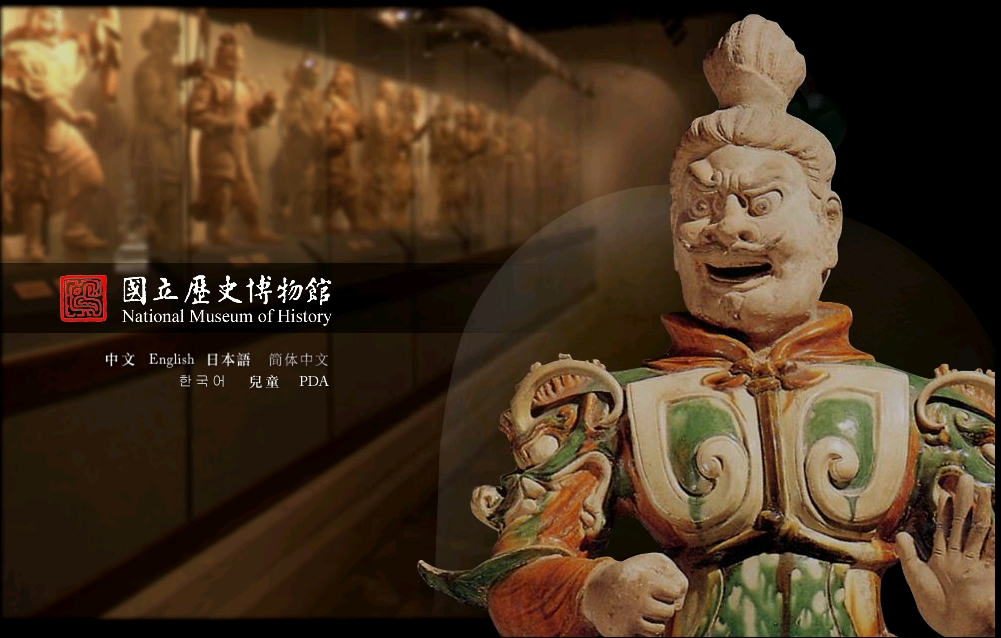  |
Lacquer ware (National Museum of History)
The Hemudu Culture at Yuyao in Zhejiang Province has confirmed that China is the first country in the world using lacquer. During the Han and Tang dynasties, lacquer ware spread to Korea and Japan, and then to Europe in the seventeenth century. A tot... |
   |
Large animals (National Museum of Natural Science)
Specimens of birds and beasts in the collection of the Museum of Natural Science include mainly stick-shaped fur study specimens, loose bone study specimens, and soaked specimens preserved in ethyl alcohol. Collection of specimens focuses on wildlife... |
   |
Lichens (National Museum of Natural Science)
Life exists everywhere, in all corners of nature. Even on the rocks or branches of the cold mountain plains, yellow, gray, white, brown or orange patches, and hanging or crawling stem-like and leaf-like forms can be seen. These are all complicated li... |
   |
Literatures of Native Plants in Taiwan (Academia Sinica)
Literature Database of Native Plants in Taiwan consists mainly of the classified literature on Taiwan vascular plants. The intent is to build a classified catalogue and data system of native Taiwan plants and to present data of different periods and ... |
   |
Mammals (National Taiwan University)
The Mammal Database contains 8 orders, 19 families, and 67 mammal species in Taiwan. In this database, you can search and observe basic information on all of these mammal species, including their classification, morphology, natural environment, and ... |
   |
Mandarin Topic-oriented Conversation Corpus (Academia Sinica)
The Mandarin Topic-oriented Conversation Corpus (MTCC) was recorded in 2002, from January to March. The conversations are natural discussion between two familiar persons. The topic of the conversations is on one chosen event happened in 2001. There a... |
   |
Medical Artifacts (National Taiwan University)
Since the beginning of the Japanese Occupation in 1895, the Japanese had built Taiwan's first hospital on Chiaki street in Da-dao-cheng– the “Japanese Taiwan Clinic,” the former name of National Taiwan University Hospital – followed by the co... |
    |
Medical Books (National Taiwan University)
In 1895, Taiwan was ceded to Japan, and the Japanese medical education system and health care system were directly transplanted to Taiwan and influenced the establishment of the local health care system. Therefore, all the medical papers and journal... |
    |
Medical Journals (National Taiwan University)
In 1895, Taiwan was ceded to Japan, and the Japanese medical education system and health care system were directly transplanted to Taiwan and influenced the establishment of the local health care system. Therefore, all the medical papers and journal ... |
   |
Medical Photographs (National Taiwan University)
Since 1895, when Taiwan was ceded to Japan, National Taiwan University (“NTU”) College of Medicine and National Taiwan University Hospital experienced the initial rough stages of building foundations and plan implementations. While introducing we... |
  |
Microfossils (National Museum of Natural Science)
Nannofossils refer to small fossils that need to be observed and studied through a microscope. Due to wide distribution, large quantity and short lifespan, some nannofossils can be used as index fossils, and are very helpful for comparing geological... |
   |
Minerals (National Museum of Natural Science)
Mineral specimens form an important part of the geology collection of the Museum of Natural Science; specimens include more than a thousand items from around 200 types of minerals. A large variety of regional minerals are represented, as are many pre... |
   |
Minerals (National Taiwan University)
The Department of Geosciences of National Taiwan University was established during the Japanese Colonial Period. Most of its paleontological collection was inherited in the age of Taihoku Imperial University, and its database is quite large in size,... |
  |
Moss (National Museum of Natural Science)
Moss, to the average person, is a common yet alien group of plants. Compared with flowering seed plants and non-flowering ferns, the composition of bryophytes is relatively primitive and simple, without vascular transmission tissues. Transmitting fun... |
  |
Natural Rock Forms (National Taiwan University)
Contained in this archive is the complete photographic record of native Taiwanese rocks found island-wide. The geographical ranges covered include the Coastal Range in Eastern Taiwan, the Central Mountain Range, the Hsuehshan Mountain Range, the west... |
  |
Online Public Access Catalogue for the Digital Archives of Archaeological Data (Academia Sinica)
There are two sets of archaeological data and related information housed in Institute of History and Philology, Academia Sinica. Archaeological data collected before 1949 were recovered from Mainland China. Archaeological data collected after 1949 ar... |
  |
Oracle Rubbings collected in the Institute of History and Philology (Academia Sinica)
Institute of History and Philology of Academia Sinica has numerous valuable rubbings of Oracle Bone inscriptions. There are approximately 40,000 items, which were obtained by two different sources. Firstly, oracles excavated by archeologists and seco... |
  |
Painting (National Palace Museum)
he paintings in the National Palace Museum span several dynasties, dating from the Tang dynasty to the ROC Era. This collection covers over one thousand years of Chinese painting tradition and development, and encompasses a wide range of genres, inc... |
  |
Paper Cuts (National Museum of History)
The majority of the paper cuts at the National Museum of History have been acquired mainly through donations, reaching up to 200 pieces. Paper-cutting, also called picture-cutting, is part of traditional Chinese folk art. The earliest unearthed item ... |
  |
Photography (National Museum of History)
Beginning 1976, the National Museum of History has accumulated photographic works, bringing up to 398 pieces in 2000. Though the technology used in photography has undergone several changes since its birth, the collection here is still that of tradit... |
  |
Porcelain (National Museum of History)
For many years, the pottery products from the Changsha Kiln have been an important part of cultural artifacts collected by the National Museum of History, and have become the largest collection in Taiwan. Pottery from the Changsha Kiln located in the... |
  |
Pottery (National Museum of History)
The National Museum of History houses approximately 320 pottery pieces from the prehistoric times and the Shang and Zhuo dynasties. The pottery collection comprises pieces of cultural relics excavated from the ancient cities such as Erlitou, Banpuo, ... |
  |
Prints (National Museum of History)
Prints at the National Museum of History can be divided into traditional folk prints, modern prints, and Japanese ukiyo-e (pictures of the floating world). Most of the traditional folk prints were renowned local works made during the Qing dynasty and... |
  |
Rare Books (National Palace Museum)
The treasured rare books in the Department of Rare Books and Documents of National Palace Museum range from the Song and Yuan dynasties to the Ming and Qing dynasties, amounting to approximately 200,000 volumes. Besides inheriting the old collections... |
  |
Rare books, Vernacular literature, Quasi rare books, Ancient spring-bound books (Academia Sinica)
The rare collections in the Fu Ssu-Nien Library are of great value and relevance to sinologists all over the world. The rare collection includes: (1)Over 44,765 volumes of rare books; (2)About 10,579 volumes of vernacular literature that are essentia... |
   |
Reptiles (National Museum of Natural Science)
There are 28 species of geckos, snakes and lizards unique to Taiwan, amounting to one-third of all native species, and holding significant evolutional and ecological importance; however, due to the destruction of ther habitats, reptiles can no longer... |
   |
Rocks (National Taiwan University)
The Department of Geosciences of National Taiwan University was established during the Japanese Colonial Period. Most of its paleontological collection was inherited in the age of Taihoku Imperial University, and its database is quite large in size, ... |
  |
Rubbings (National Palace Museum)
Rubbings refer to rubbings of stele that can be used as models for calligraphy. The collection of rubbings held in the National Palace Museum date from the Han Dynasty to the ROC Era. Large in size and excellent in quality, the collection has retai... |
   |
Rubbings of Taiwan's Ancient Tablets (National Taiwan University)
In December 1997, the library received a collection of old rubbings from the Department of Anthropology, which were originally collected by Taihoku Imperial University (now National Taiwan University) during the Japanese occupation. Among the rubbing... |
  |
Seal (National Museum of History)
The seal collection at the National Museum of History comprises seals, seal rubbings, and seal materials. Not only the beauty of ancient seals and seal engravings, but also the juxtaposing effects of red ink on white paper and the lustrous beauty of ... |
   |
Southern-Min Archive: A Database of Historical Change in Language Distribution (Academia Sinica)
The Southern-Min Archive: A Database of Historical Change in Language Distribution" project is a new addition in 2003. It aims to provide both a historical depth and sociological variation to the archives of Chinese languages in Taiwan."... |
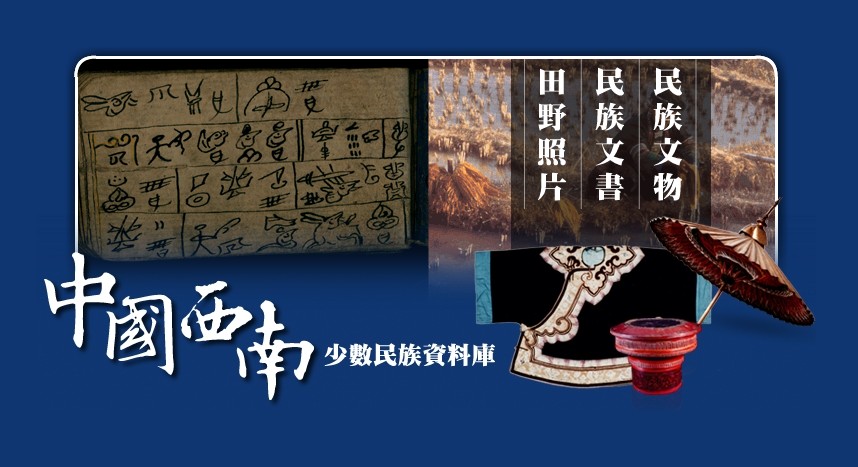  |
Southwestern China's nationalities Combined archive of Southwestern China's nationalities (field photographs) (Academia Sinica)
Between 1929 and 1943, early Institute of History and Philology (Academia Sinica) researchers carried out planned, scientific, and inter-provincial investigative field work in southern, southwestern, and northeastern China on a historically unprecede... |
   |
Specimens of Native Plants in Taiwan (Academia Sinica)
There are over 115,000 specimen items in the Herbarium of Academia Sinica, among which approximately 85,000 were gathered locally in Taiwan. The intent is to build a Chinese-English bilingual search system of native Taiwan plant specimens that compri... |
 |
Taiwan Archival Information System
This database embodies historical records, private manuscripts, official documents and book collections collected by Institute of Taiwan History. The formats of the resources include physical and digital manifestations. The establishment of integrati... |
  |
Taiwan Collectanea (Academia Sinica)
“Taiwan Collectanea” was the biggest compiling in Taiwan’s related literature, which was published by Taiwan Bank’s economic research room in 1957 to 1972. Since it had published, it had become the material used and cited with highest frequen... |
 |
Taiwan Sotokufu Archives
This database embodies Taiwan Sotokufu Archives(1895-1945). It was established by Academia Sinica and Taiwan Historica since 1997.... |
   |
Tan-Hsin Archives (National Taiwan University)
The Tan-Hsin Archives is a collection of administrative and judicial documents from Hsinchu County, Tamsui Subprefecture, and Taipei Prefecture dating from 1776 to 1895. This collection contains nearly 20,000 documents. The largest section consists o... |
  |
Teeth and Bone ware (National Museum of History)
Tooth and bone carving in China has had a long history. During the Neolithic period, animal bones and teeth were already brought into use, and were later replaced by ivory due to its remarkable firmness and elasticity, and beautiful colors. Aside fro... |
  |
The Archives of the Land Administration Department of Taiwan Provincial Government (Academia Historica)
These files date from 1944 to 1992, totaling 2,151 volumes. The files can be roughly classified as follows: laws and regulations, land administration reports, conference reports, personnel organization, reception and disposal of Japanese property, la... |
  |
The Archives of the National Government (Academia Historica)
The content covers historical documents of internal and external affairs and major construction projects of the National Government of the Republic of China, a total of 16,,942 volumes in 21 categories, and covering the time period from July, 1925 to... |
    |
The Archives of the National Resources Commission (Academia Historica)
These files span the years from 1939 to 1952, in a total of 27,985 volumes; of these, 20,074volumes are in Chinese, and 7,911 are in foreign languages. Chinese files are documents interchanged between the National Resources Commission and other subsi... |
    |
The Collection of President Chiang Ching-kuo (Academia Historica)
Includes 2,314 volumes of artifacts related to president Chiang Ching-Kuo, including previously classified military files, files of the Kuomingtang servicemen, records of meetings with foreign guests, acts and events, notes and speeches, photographs,... |
  |
The Collection of President Chiang Kai-shek (Academia Historica)
These files include documents, telegrams, diaries, letters, books, maps, audio-visual data and other artifacts of Chiang Kai-Shek's administrative legacy, compiled through the years by close aides of Chiang. During Chiang's relinquishment of power in... |
   |
The Digital Archives of Formosan Aborigines (Academia Sinica)
The foremost target of the “The Digital Archives of Formosan Aborigines” is to sustain the aboriginal research information archived in the Institute of Ethnology of the Academia Sinica for the educators, academics, and the general public. The dat... |
  |
The Du Xiang-Guo Collection (Academia Sinica)
Du Xiang-Guo (1893-1946) was born in Dajia, Taichung County. He and his father, Du Qing (1869-1937), devoted to the refinement of straw hats. Du Qing founded the first private company in Taiwan and he was the first to set up factories to produce Daji... |
    |
The Manuscripts of Kanori Ino (National Taiwan University)
Kanori Ino (1867-1925) was a pioneer in Taiwan studies. Sent to Taiwan for anthropological research in 1895, after Japan's occupation of the island, Ino was the first to propose a comprehensive categorization of Taiwan's indigenous populations. His f... |
   |
The Taiwan Malacofauna Database (Academia Sinica)
The Taiwan Malacofauna Database includes the following sub-database: 1. The Catalogue database-Basic information with photos of each species. 2. The Distribution database-Through the web-site, users can learn the shell distribution in Taiwan area. 3.... |
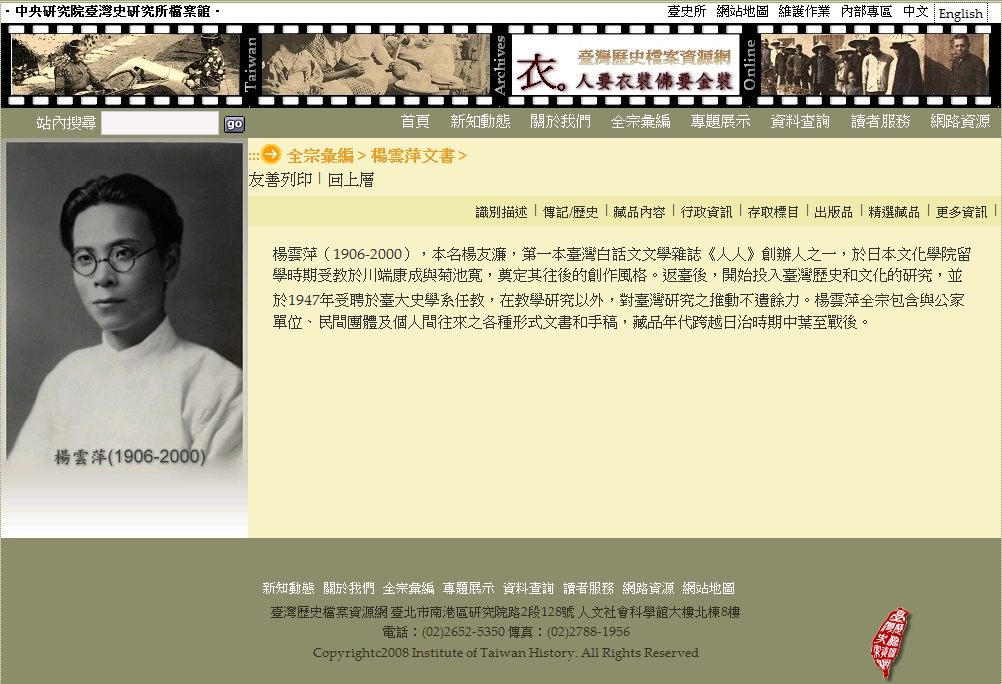  |
The Yang Yun-Ping Collection (Academia Sinica)
Yang Yun-Ping (1906-2000) is previously known as Yang You-Lian. He published an article on The Taiwan Minpao with the pseudonym “Shih-Lin Yun-Ping Sheng” in 1924, after that he was known as Yun-Ping generally. In 1925, he published “Renren” m... |
    |
The Yasusada Tashiro Collection (National Taiwan University)
Yasusada Tashiro was a botany expert who worked for the Taiwan Governor Genera's Office during the Japanese occupation period. A pioneer in Taiwan botanical studies, Tashiro left behind numerous field reports and other research manuscripts. During hi... |
  |
Type Specimens of Insects (National Taiwan University)
The Insect Museum of National Taiwan University (NTU) was founded during the Japanese Colonial Period, and holds numerous precious specimens in its collections. The NTU Insect Museum and the Agricultural Research Institute contain the two most abunda... |
    |
Type Specimens of Plants (National Taiwan University)
The original specimen that acts as evidence in the discovery of a new species is known as the type specimen, and should be preserved permanently. The image, label, and collection of information about the specimen, as well as the original text and pic... |
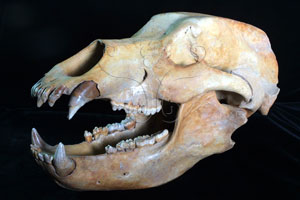   |
Vertebrate Fossils (National Museum of Natural History)
There are currently 4,500 fossils of vertebrates in the collection of the Museum of Natural History, collected from Taiwan, China and other places around the world. Specimens date from the Paleozoic, Mesozoic and Cenozoic eras, and include classes Ch... |
  |
Weaving (National Museum of History)
Since 1959, the National Museum of History has acquired the woven fabrics either through donations or purchases, which are mostly the clothing from the Qing dynasty and the early Republic of China, bringing the weaving collection to the total of over... |
  |
Western paintings (National Museum of History)
The National Museum of History houses 737 Western paintings of the early Republic of China period, such as those by Chang Yu, Pan Yu-Liang, Ma Bai-Shui, Zhao Er-Dai, Liao Ji-Chun, Zhao Wu-Ji, Yang San-Lang, Lan Yin-Ding, and Xi De-Jin. Foreign painti... |
  |
Whales and dolphins (National Museum of Natural Science)
The survey and study of whales and dolphins in Taiwan only began in 1990; with the advent of marine surveys and whale watching, visual and academical information of wild whales and dolphins in regional waters has also accumulated. The Museum of Natur... |
  |
Wood, Bamboo and Lacquerware (National Palace Museum)
The antiquities held in the collections of the National Palace Museum span a period of at least 7,000 thousand years, and consist of a large variety of genres, including bronze, jade, porcelain, lacquerware, etc. Its collections are fine in quality ... |